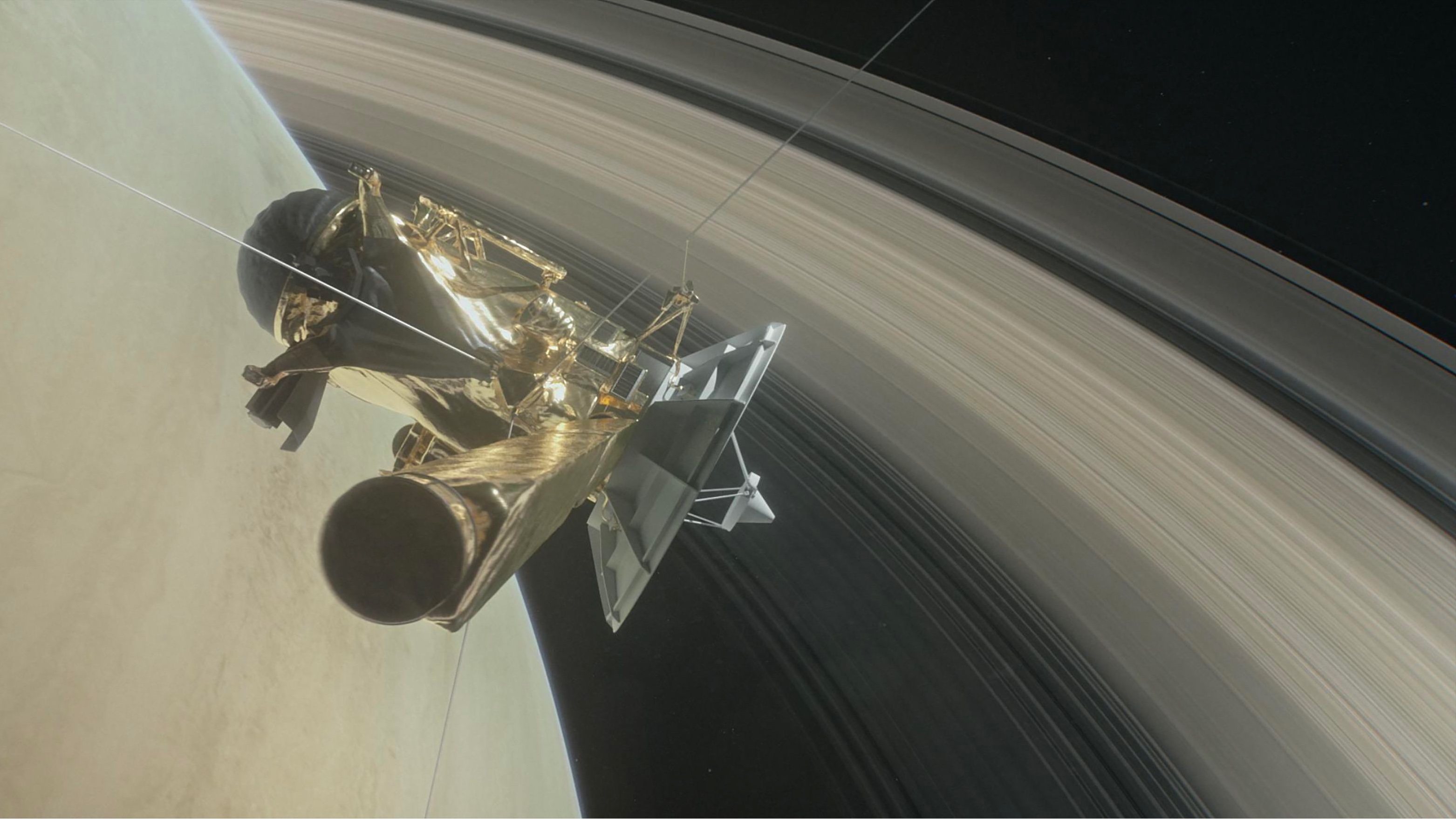Nasa's Cassini probe is preparing to plunge between Saturn and its rings
Offering a never-before-seen look at the planet

We know quite a bit about the inner planets of the solar system - particularly Mars - but much less about the gas giants further out. That's why, in 1997, Nasa launched a probe towards Saturn named Cassini.
It reached orbit in 2004, and for the thirteen years since has been sending reams of data back to Earth, yielding an enormous amount of interesting science. The end of its mission is scheduled for later this year - September 15 - when it'll make a death plunge through Saturn's atmosphere.
Before that, mission engineers are undertaking more risky manoeuvres to get as much data out of the probe as they can before its final descent. The newest is a plan to dive through the gap between the planet and its rings, giving us an unprecedented new view of the gas giant.
Whizz-by
At 9am GMT this morning, the dive began. Skirting the planet at an altitude of about 1800 miles, the probe will whizz past the ice and rocks that comprise the planet's rings closer than ever before. The aim is to get a look at what they're made of, their mass, and whether they're old or new.
That will tell us, in turn, whether they were formed at the same time as the planet or in another process since - perhaps when asteroids smashed into one of Saturn's 60 moons.
It'll also scan the inside of the planet - measuring the core mass and how many "heavy" elements are found within.
Cross your fingers
The problem is that communications with the probe will go dark in the process and for about a day afterwards, meaning a tantalising wait to find out if the probe survived.
Get daily insight, inspiration and deals in your inbox
Sign up for breaking news, reviews, opinion, top tech deals, and more.
It won't be until 7am on 27 April that we'll know if the spacecraft made it, so until then, keep your fingers crossed.
Nasa seems pretty chill about the whole thing: "Images and other data are expected to begin flowing in shortly after communication is established," the agency said.



















